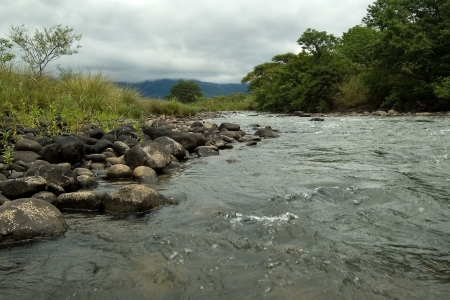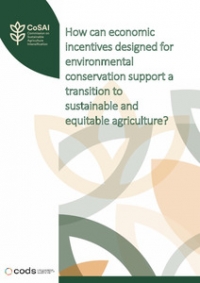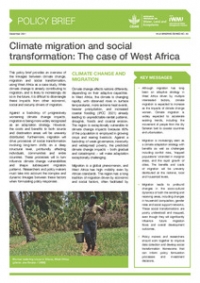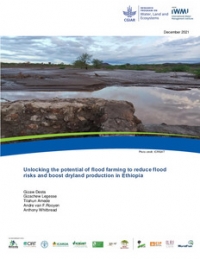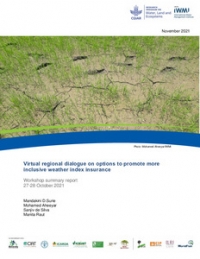It seems like every week the world faces a brand new disaster. Floods, cyclones, drought and other risks are increasing worldwide. These threaten long-fought-for development gains. And most of them are directly attributable to a mix of vulnerable livelihoods, unplanned urban development, ecosystem degradation, and – very likely – climate change.
A recent study from the International Water management Institute (IWMI) shows that approximately 750 million people are vulnerable to climatic extremes in South Asia. Climate change could push more than 100 million people within developing countries below the poverty line by 2030. Already this year, more than 152 natural disasters have been reported with nearly 4,000 deaths and 50 million people affected. The economic loss is already calculated at USD 13 billion (EM-DAT, 2019).
In 2015, UN Member States signed the global Sendai Framework for Disaster Risk Reduction and the Paris climate agreement. These agreements aimed to reverse upward trends in the numbers and impacts of disasters by substantially reducing losses and by building the resilience of nations and communities to disasters. With these agreements now in their fifth year of implementation, it is important to capitalize on the synergies between them for adaptation and disaster risk reduction, both in policies and practical action. It’s time to double down on the triple win of lowering disaster risk, adapting to climate change, and achieving sustainable development outcomes.
This week marks the International Day for Disaster Reduction, and IWMI, working with CGIAR Research programs on Water, Land and Ecosystems (WLE), and Climate Change, Agriculture and Food Security (CCAFS), Indian Council of Agricultural Research (ICAR), Japan’s Ministry of Agriculture, Forestry and Fisheries (MAFF), is taking action now to identify and reduce existing disaster risks and prepare for a changing future. Here are five actions we’re already taking:
1) Providing insurance against crop losses caused by floods
In the state of Bihar, India, two-thirds of the population live under the threat of floods that regularly wipe out farmers’ crops, destroying their livelihoods. In a bid to protect farmers, the Agriculture Insurance Company of India offered flood insurance pay-outs underpinned by satellite data during the 2017 monsoon season.
This is index-based flood insurance, where payouts are based on satellite images with hydrological modelling. If rainfall reaches a level at which flood losses are deemed likely, then satellite images are used to verify the depth and duration of the flood. This way, the insurance company is able to quickly, accurately and inexpensively identify exactly which farmers are eligible for what pay-out. These successful pilots show potential for similar programs across countries and regions. In 2019, IWMI and partners initiated bundling insurance with stress-tolerant seed varieties and providing climate information services to marginal smallholder farmers in Bihar.
2) Monitoring droughts with satellites for faster disaster relief
Drought affects more people than any other physical hazard. To allow national authorities to assess exactly when and where disaster relief efforts are needed to help farmers affected by drought, the South Asia Drought Monitoring System launched in 2016. Every eight days, the system publishes detailed maps showing drought severity across Afghanistan, Bangladesh, Bhutan, India, Nepal, Pakistan, and Sri Lanka. The maps depict seven categories, from healthy vegetation to extreme drought, through analysis of historical satellite data. Drought relief can then be deployed more effectively. IWMI-led efforts to expand applications of technology to drought preparedness are underway in Southern Africa, the Middle East, and Southeast Asia.
3) Using satellite data to predict droughts
Almost more important than knowing the current drought situation is being able to predict droughts. Building on the monitoring system described above, a drought early-warning system developed has been developed for six districts in India. Also based on satellite data, it accurately estimates water deficits in the soil and indicates future drought risk in exact locations. Local and national authorities can then brief farmer associations and communities on possible mitigation measures, such as sowing drought-tolerant crops and using soil and water conservation methods.
4) Using satellite data to forecast floods
The Niger-Benue River Basin in West Africa is regularly devastated by severe floods. Limited monitoring systems are on the ground make it difficult to forecast flood risks. Using satellites, we are able to remotely measure how much water is in the rivers. This has enabled us to accurately predict downstream water flows and potential floods five days in advance, allowing local authorities to send out warnings.
5) Guiding emergency flood response through satellite maps
Finally, we can use satellite technologies to better manage flood disasters. For example, in August 2017, incessant rains caused severe flooding in northern India and southern Nepal, affecting two million people. The Sentinel Asia initiative developed high-resolution maps that helped guide relief efforts and enabled officials to locate vulnerable populations and estimate crop damage early on. Further, a prototype concept is being developed using weather forecast data to provide disaster preparedness funds before disasters strike. Similar solutions could work across the globe with the right investment.
All these solutions show that satellite data can help boost climate resilience for the communities that need it the most. However, strong partnerships among scientists, space agencies, and local, national, and regional decision-makers are key. Through these partnerships, we have a chance to successfully predict, manage and respond to climate-related disasters, helping vulnerable communities and the world at large.
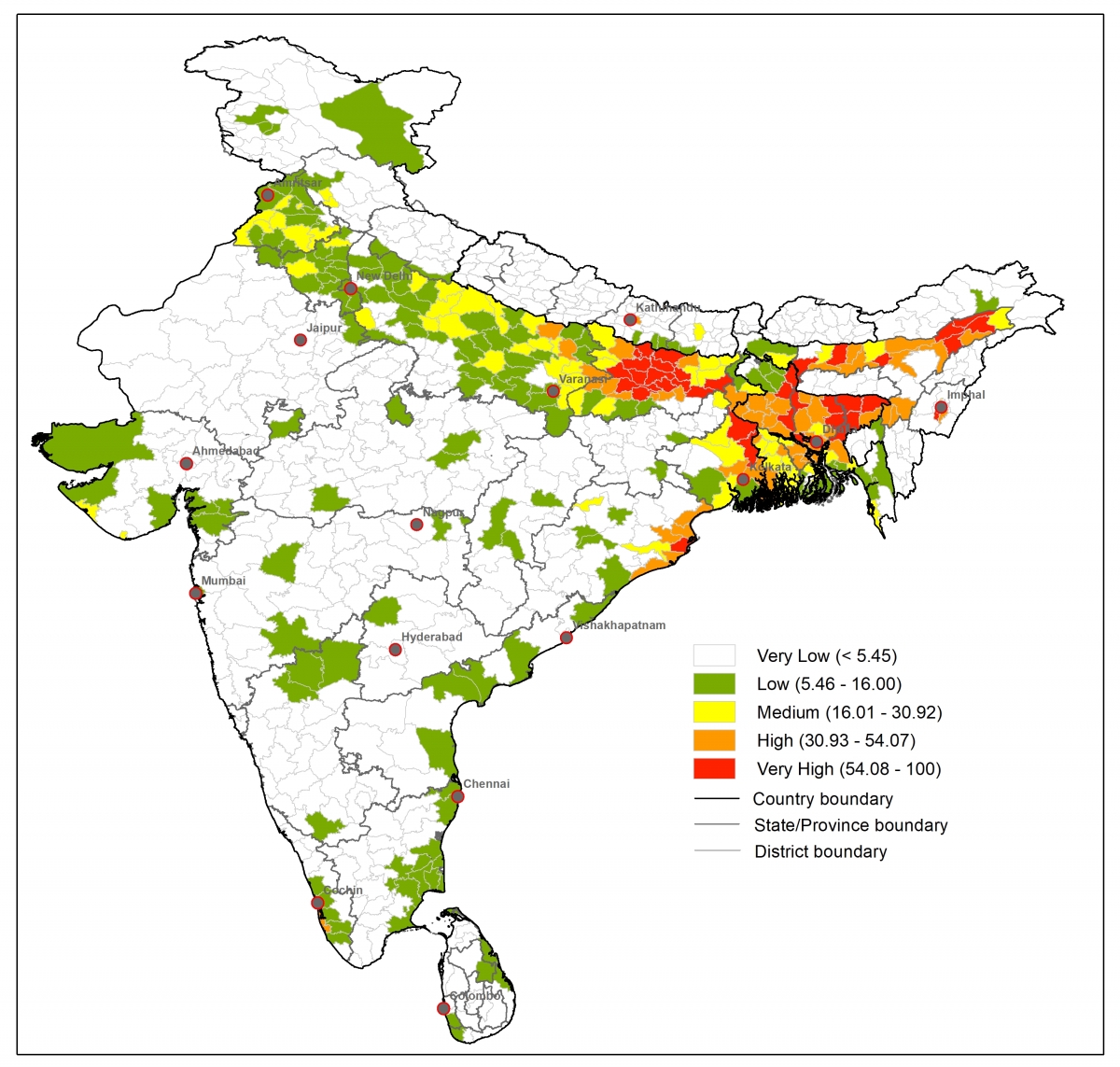
Map of Human Vulnerability Index from flood risks in South Asia
The examples summarized here show that good progress is being made in a number of countries to integrate climate change adaptation and disaster risk reduction, both at the national policy level and through on-the-ground action. Both water security and water scarcity are growing challenges, and some common themes and lessons are emerging. While drawing on international expertise and support, most initiatives are targeted at local needs and problems but predominantly make use of national and local capacities. Expertise available in different regions on disaster risk reduction and disaster risk management is playing a key role in adaptation. Local governments as well as national governments and the private sector are taking a lead and are investing in adaptation and risk reduction.
Local-level adaptation is a relatively new field of investment and there’s limited information for investors on what their options are. Across these different areas, investors need to know where the opportunities are for them. What are the challenges, where are the risks? They also need more information on results and potential returns. This is crucial, particularly for private investors.
Lessons for implementation from local-level adaptation plans
There is no standard internationally-agreed guidance on how to integrate climate change adaptation and disaster risk reduction, and the frameworks being developed by countries are diverse and largely untested. The formal mechanisms for linking the policies and institutions concerned with adaptation, disaster risk reduction and development, and engaging community actors, are often rudimentary. The level of funding being applied is still small and generally programmes have not attained comprehensive national implementation.
Some developing countries have drawn on currently available international climate change funds, but there is still great uncertainty about how the large adaptation funds that are projected for the future will be accessed and applied. However, there are some steps we can take now:
- Take stock of the available information on hazards, exposure, vulnerability, impact and risk assessments. At the local level, support multi-stakeholder processes to engage the diverse technical expertise and political interests concerned with adaptation and disaster risk.
- Initiate capacity development activities to build or strengthen coherent approaches to climate change adaptation and disaster risk reduction. The linking of local climate investment plans with national planning on disaster risk reduction and climate change adaptation requires mutual collaboration and learning among policymakers, experts and practitioners from the two communities.
- Design joint project initiatives that cut-across national to local scales in addressing both climate change adaptation and disaster risk reduction. For example IWMI’s implementation of flood risk management plan through integrated approach comprising risk assessment, climate insurance, emergency response and post-flood recovery program through public-private partnership aims at reducing disaster risks at household levels and developing local adaptation plans with targeted investments benefiting the communities.
- Conduct adaptation planning with a multi-sectoral, development-based approach and centralized oversight responsibility, to achieve policy coordination and mainstreaming across sectors and institutions, and as part of national and local development planning. The process covers such things as strategy, principles, applicable law, institutional responsibilities, investment priorities, and accountability mechanisms.
By moving ahead with these four actions, countries and communities can make a step change in readiness for extreme weather events. It will take investment, partnerships and fortitude to do so, but the risks of inaction are stark. The payoffs of doubling down on disaster risk reduction are worth the investment for the world’s most vulnerable communities.
Also published on PreventionWeb
Thrive blog is a space for independent thought and aims to stimulate discussion among sustainable agriculture researchers and the public. Blogs are facilitated by the CGIAR Research Program on Water, Land and Ecosystems (WLE) but reflect the opinions and information of the authors only and not necessarily those of WLE and its donors or partners. WLE and partners are supported by CGIAR Trust Fund Contributors, including ACIAR, DFID, DGIS, SDC, and others.







